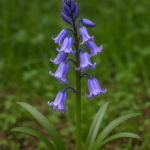
Saltbush, a resilient and adaptable genus belonging to the Amaranthaceae family, encompasses approximately 250 species with a remarkable capacity to thrive in challenging environments. Known for its historical uses in indigenous cultures and its diverse applications in modern agriculture, saltbush has become a focal point of scientific research and sustainable practices. From its geographic distribution on nearly every continent to its cultivation for culinary and medicinal purposes, saltbush plays a multifaceted role in ecosystems worldwide. This introductory glimpse sets the stage for exploring the historical facts, numerical trivia, and significant details that showcase the fascinating journey of saltbush through time and across diverse landscapes.
Taxonomy and Classification:
The genus Atriplex falls within the family Amaranthaceae, a diverse family of flowering plants. Atriplex comprises approximately 250 species collectively referred to as saltbush. This taxonomic diversity allows the genus to adapt to various environmental conditions, showcasing its resilience in challenging habitats.
Geographic Distribution:
Saltbush exhibits a global presence, thriving in environments as diverse as arid deserts and coastal regions. Its remarkable adaptability has led to its distribution on every continent except Antarctica. This widespread occurrence underscores the plant’s ability to survive and even flourish in diverse climates and soil conditions.
Historical Uses:
Throughout history, indigenous cultures, including Australian Aboriginals, have recognized the medicinal and culinary value of saltbush. Its historical uses encompass a wide range of applications, from traditional remedies for ailments to inclusion in culinary practices, showcasing its importance in ancient societies.
Culinary Importance:
Some varieties of saltbush are not only hardy in harsh environments but also contribute a unique flavor to culinary dishes. Its distinctive salty taste has led to its use as a seasoning, adding a novel dimension to traditional cuisines. This culinary significance positions saltbush as not just a resilient plant but also a flavorful addition to diverse diets.
Agricultural Benefits:
Saltbush has become a valuable asset in agriculture due to its capacity to endure high salinity in soil. Farmers cultivate saltbush to combat soil degradation in arid and saline-prone areas, providing a sustainable solution for regions facing challenging agricultural conditions. Its role in preventing soil erosion underscores its broader ecological significance.
Environmental Adaptations:
One of saltbush’s remarkable features is its adaptation to arid conditions. The plant has evolved mechanisms to excrete excess salt through glands on its leaves, allowing it to survive and even thrive in saline environments. This adaptive trait showcases the resilience of saltbush in the face of challenging ecological conditions.
Record-Breaking Species:
Atriplex nummularia, commonly known as old man saltbush, stands out as a widely cultivated species. Some varieties of this saltbush can reach impressive heights of up to 10 feet, setting records for the plant’s stature. This remarkable growth underscores the potential of saltbush as a substantial and visually striking component of ecosystems.
Saltbush in Australia:
Australia boasts several native species of saltbush, with Atriplex vesicaria, also known as bladder saltbush, being a prominent example. The presence of native saltbush species highlights the plant’s historical and ecological importance in the Australian landscape, showcasing its adaptation to the continent’s unique environmental challenges.
Medicinal Uses:
Indigenous communities have harnessed the medicinal properties of saltbush for generations. The plant has been utilized for various health-related purposes, including treatments for skin conditions. Its role in traditional medicine emphasizes the cultural significance of saltbush as a valuable resource in indigenous healing practices.
Saltbush as Forage:
In addition to its agricultural applications, saltbush serves as a valuable source of forage for livestock in certain regions. Its nutritional content makes it an attractive feed option, particularly during periods of scarcity. This dual-purpose utilization further underscores the plant’s versatility and its role in supporting both agriculture and animal husbandry.
Cultivation for Animal Feed:
Beyond its natural presence, saltbush is actively cultivated in certain regions to provide a reliable fodder source for livestock. The plant’s nutritional value makes it an essential component in animal diets, contributing to the health and well-being of livestock. This intentional cultivation aligns with sustainable agricultural practices, ensuring a consistent and nutritious food supply for animals.
Environmental Conservation:
Saltbush plays a crucial role in environmental conservation efforts, particularly in the restoration of degraded soils. Its ability to thrive in challenging conditions makes it a valuable tool in reclaiming areas affected by soil degradation, erosion, or salinity. Planting saltbush contributes to the stabilization of ecosystems and promotes overall environmental health.
Commercial Applications:
Certain varieties of saltbush have found their way into commercial cultivation for use in the food industry. The commercialization of saltbush highlights its economic potential and the recognition of its unique characteristics, such as the salty flavor, which can be harnessed for culinary purposes on a larger scale.
Cultural Significance:
Saltbush holds cultural significance in various indigenous communities, often featuring in stories, rituals, and traditional practices. Its presence in cultural narratives underscores the deep connection between communities and their environment, emphasizing the historical and spiritual importance of saltbush in shaping cultural identities.
Drought Resistance:
A standout feature of saltbush is its exceptional resistance to drought conditions. This resilience makes it a valuable resource in regions facing water scarcity, where traditional crops may struggle to survive. Saltbush’s ability to endure prolonged periods of drought contributes to its increasing importance in sustainable agriculture.
Genetic Diversity:
Ongoing research focuses on exploring the genetic diversity of saltbush species. Understanding the genetic makeup of different varieties can lead to the development of more resilient and adaptable cultivars. This scientific endeavor aims to enhance the plant’s overall performance in diverse environmental conditions.
Soil Improvement:
The cultivation of saltbush is recognized as a sustainable practice for soil improvement, especially in saline soils. By harnessing the plant’s ability to tolerate high salinity, farmers can enhance soil quality, making it more suitable for other crops and promoting sustainable land management practices.
Biodiversity Support:
Saltbush contributes to local biodiversity by providing habitat and food for various species. Its role in supporting diverse ecosystems underscores its ecological importance beyond its direct uses in agriculture. The plant becomes an integral part of a complex web of interactions within the natural environment.
Modern Agricultural Practices:
Modern agricultural practices increasingly incorporate saltbush into agroforestry systems. This integration enhances the sustainability of farming operations, promoting soil health, preventing erosion, and contributing to the overall resilience of agricultural ecosystems.
Traditional Knowledge:
The traditional knowledge surrounding the use of saltbush is being actively integrated into modern sustainable agriculture practices. This harmonious blend of traditional wisdom and contemporary agricultural techniques ensures the continued relevance of saltbush in addressing current challenges and promoting environmentally friendly farming methods.
Seed Production:
Efforts are underway to develop saltbush varieties with high seed production. Increased seed yield not only supports the plant’s natural reproductive cycle but also facilitates wider agricultural adoption. The focus on seed production aligns with the goal of expanding the cultivation of saltbush as a sustainable and resilient crop.
International Collaboration:
Scientists and researchers engage in global collaboration to study and conserve different species of saltbush. This collaborative effort allows for the exchange of knowledge, genetic resources, and conservation strategies. International cooperation highlights the recognition of saltbush as a valuable resource with applications that extend beyond regional boundaries.
Saltbush Oil:
Some species of saltbush are under investigation for the production of essential oils. The extraction of oils from saltbush may have commercial applications, potentially contributing to industries such as perfumery, cosmetics, or even alternative energy sources. Research in this area reflects the exploration of diverse uses for saltbush beyond traditional domains.
Erosion Control:
Saltbush is employed as a strategic tool for erosion control, particularly in areas prone to soil degradation. Its extensive root system helps bind soil particles together, preventing erosion caused by wind or water. The use of saltbush in erosion control aligns with sustainable land management practices, addressing environmental challenges in vulnerable regions.
Economic Impact:
The cultivation and commercial utilization of saltbush contribute significantly to local economies. Beyond its ecological benefits, saltbush has economic value, creating opportunities for income generation through agriculture, trade, and associated industries. The economic impact underscores the multifaceted importance of saltbush in both environmental and economic contexts.








